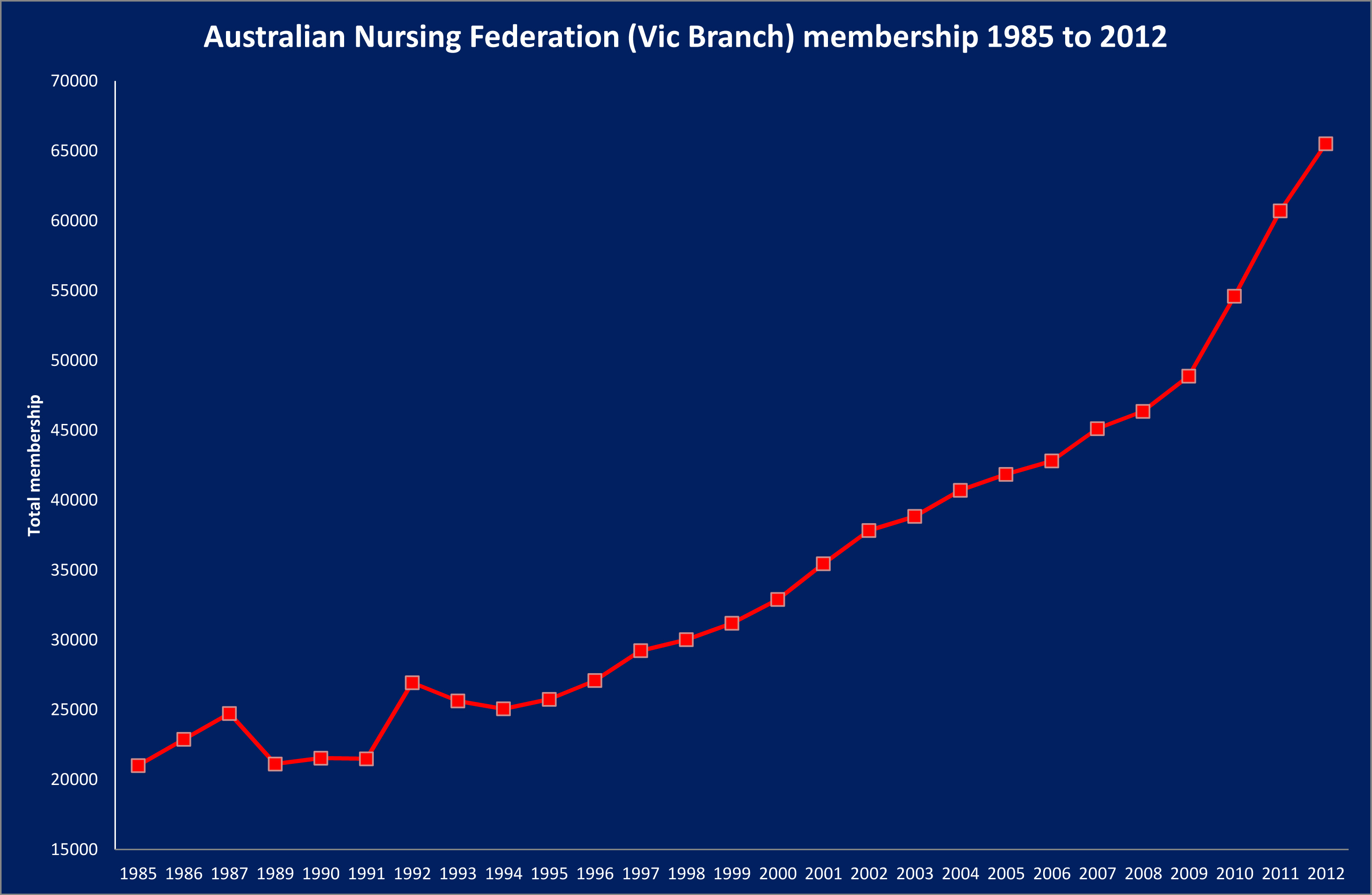Multiplying the membership in an organising union
In the last twenty five years, the membership of the Australian Nursing Federation (Victorian Branch) - the ANF(Vic) - has quadrupled. This rise in membership is in sharp contrast to trends in most unions in Australia and other developed countries where membership has steadily fallen. It has taken place as the union has adopted the organising model of union recruitment and retention.

Since 1989, there have been just two Branch Secretaries of the ANF(Vic): Belinda Morieson and Lisa Fitzpatrick. At the start of Morieson's tenure in 1989, membership stood at 15,712. By the time she left the position in December 2001, membership had doubled to reach 30,464. Under Fitzpatrick, there has been a further major expansion as membership doubled yet again. By December 2012, membership had climbed to 65,500.
Like the Justice for Janitors movement in the United States, the ANF(Vic) might offer a blueprint for other trade unions who want to increase membership by developing an organising model. The strategies and structures of the ANF(Vic)'s organising model are presented.
Union organising in the ANF(Vic)
In response to continuing state government proposals for financial cutbacks in healthcare, nursing shortages and workload expansion, Branch Secretaries Belinda Morieson and Lisa Fitzpatrick set out to transform the ANF(Vic) through the principles of the organising model. The characteristics of the organising model of recruitment and retention are most unlike those of the traditional servicing model. In the servicing model, the union has a centralised, "top down" structure. It provides experts to negotiate wages and conditions, settle disputes, protect jobs, and give advice for members. When things go wrong at the workplace, members approach the union so that paid union officials can try and solve their problems. If the union fails to "deliver" - to provide services - then membership declines. The organising model is quite different. The union develops a decentralised "bottom up" structure. Union organising stresses the role of elected leaders and activists in encouraging workers to solve their own problems, especially by taking part in industrial action at the workplace. This process develops a collective consciousness in the workforce. Workers join the union because they develop union values.
In the organising model of the ANF(Vic), industrial action took the form of a strategically-planned long-term series of mobilisation campaigns that accompanied enterprise bargaining negotiations. The aim of the industrial campaigns was to achieve higher nurse-patient ratios. Public sympathy was sought by extensive publicity that linked nursing shortages to a decline in health standards. In turn, the union's organisational structure was transformed. The union became a member-oriented organisation whose main purpose is to support this worker mobilisation.
The main factors of the organising model that have contributed to membership growth in the ANF(Vic) are presented. They consist of leadership, mobilisation of workers, changes in the union's organisational structure, the 1986 50-day strike and other historical factors. Further material to read about the nurses' union is also presented.